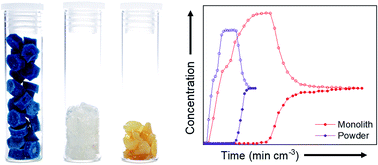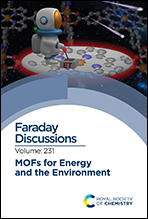Monolithic metal–organic frameworks for carbon dioxide separation†
Abstract
Carbon dioxide (CO2) is both a primary contributor to global warming and a major industrial impurity. Traditional approaches to carbon capture involve corrosive and energy-intensive processes such as liquid amine absorption. Although adsorptive separation has long been a promising alternative to traditional processes, up to this point there has been a lack of appropriate adsorbents capable of capturing CO2 whilst maintaining low regeneration energies. In the context of CO2 capture, metal–organic frameworks (MOFs) have gained much attention in the past two decades as potential materials. Their tuneable nature allows for precise control over the pore size and chemistry, which allows for the tailoring of their properties for the selective adsorption of CO2. While many candidate materials exist, the amount of research into material shaping for use in industrial processes has been limited. Traditional shaping strategies such as pelletisation involve the use of binders and/or mechanical processes, which can have a detrimental impact on the adsorption properties of the resulting materials or can result in low-density structures with low volumetric adsorption capacities. Herein, we demonstrate the use of a series of monolithic MOFs (monoUiO-66, monoUiO-66-NH2 & monoHKUST-1) for use in gas separation processes.

- This article is part of the themed collection: MOFs for energy and environmental applications


 Please wait while we load your content...
Please wait while we load your content...